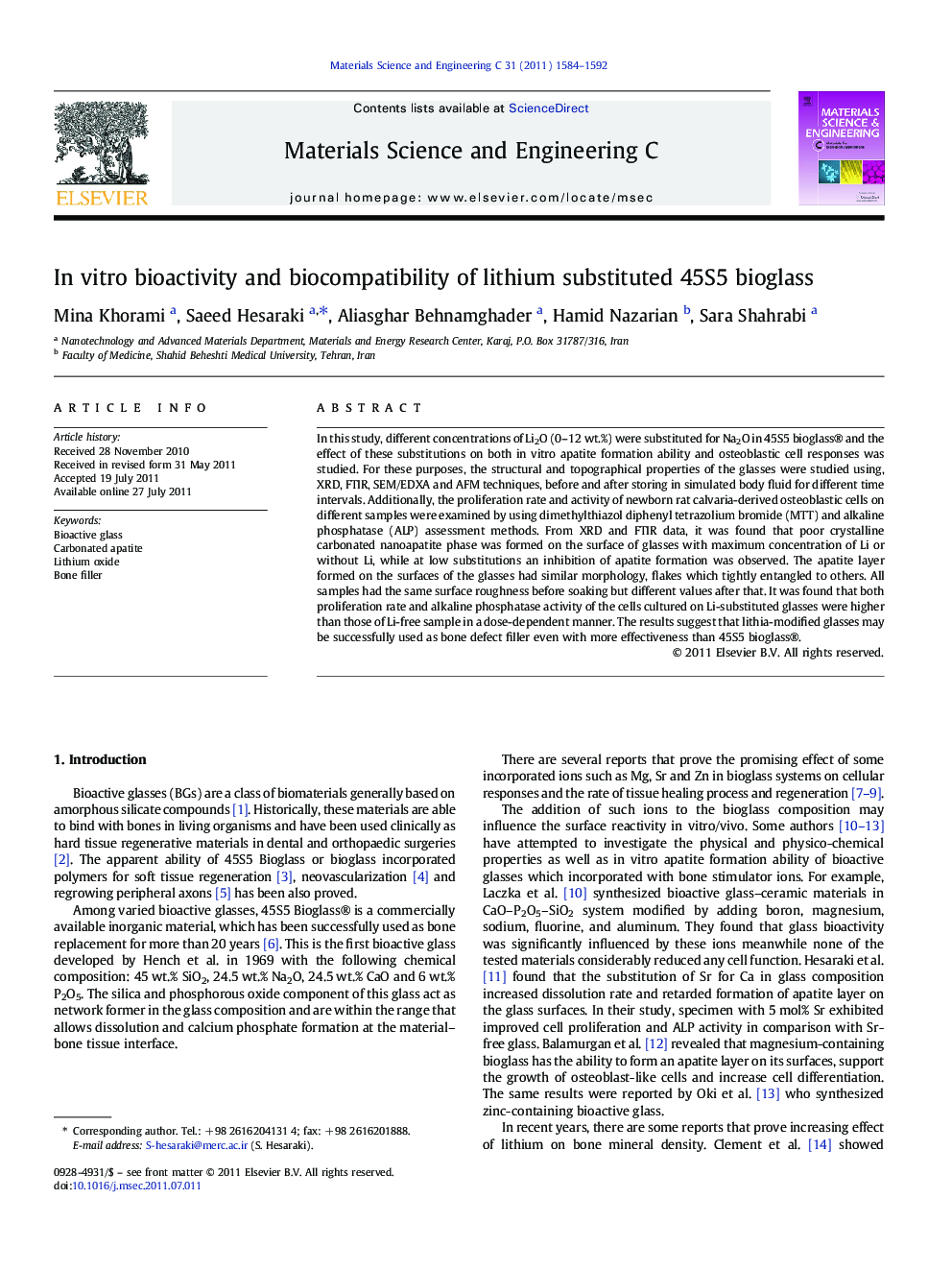| Article ID | Journal | Published Year | Pages | File Type |
|---|---|---|---|---|
| 1429751 | Materials Science and Engineering: C | 2011 | 9 Pages |
In this study, different concentrations of Li2O (0–12 wt.%) were substituted for Na2O in 45S5 bioglass® and the effect of these substitutions on both in vitro apatite formation ability and osteoblastic cell responses was studied. For these purposes, the structural and topographical properties of the glasses were studied using, XRD, FTIR, SEM/EDXA and AFM techniques, before and after storing in simulated body fluid for different time intervals. Additionally, the proliferation rate and activity of newborn rat calvaria-derived osteoblastic cells on different samples were examined by using dimethylthiazol diphenyl tetrazolium bromide (MTT) and alkaline phosphatase (ALP) assessment methods. From XRD and FTIR data, it was found that poor crystalline carbonated nanoapatite phase was formed on the surface of glasses with maximum concentration of Li or without Li, while at low substitutions an inhibition of apatite formation was observed. The apatite layer formed on the surfaces of the glasses had similar morphology, flakes which tightly entangled to others. All samples had the same surface roughness before soaking but different values after that. It was found that both proliferation rate and alkaline phosphatase activity of the cells cultured on Li-substituted glasses were higher than those of Li-free sample in a dose-dependent manner. The results suggest that lithia-modified glasses may be successfully used as bone defect filler even with more effectiveness than 45S5 bioglass®.
► In this study, 0-12 wt% Li2O was substituted for Na2O in 45S5 bioglass®. ► Nanoapatite was only formed on surfaces of SBF-soaked glasses with 0 and 12% of Li. ► At low Li substitutions, inhibition on apatite formation was observed. ► The proliferation and ALP activity of osteoblasts enhanced by adding Li to 45S5 glass. ► It seems that like Sr and Mg, Li has also stimulating effect on osteoblasts.
